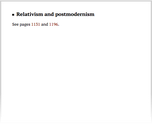Notes
Chapter 10: Processes of Perception and Analysis
Section 3: Defining the Notion of Randomness https://www.wolframscience.com/nks/chap-10--processes-of-perception-and-analysis--notes#sect-10-3--defining-the-notion-of-randomness
https://www.wolframscience.com/nks/chap-10--processes-of-perception-and-analysis--notes#sect-10-3--defining-the-notion-of-randomness
Section 4: Defining Complexity https://www.wolframscience.com/nks/chap-10--processes-of-perception-and-analysis--notes#sect-10-4--defining-complexity
https://www.wolframscience.com/nks/chap-10--processes-of-perception-and-analysis--notes#sect-10-4--defining-complexity
Section 5: Data Compression https://www.wolframscience.com/nks/chap-10--processes-of-perception-and-analysis--notes#sect-10-5--data-compression
https://www.wolframscience.com/nks/chap-10--processes-of-perception-and-analysis--notes#sect-10-5--data-compression
Practicalities [of data compression]
Lengths of [number] representations
Completeness [of number representations]
[Number representations in] practical computing
Section 6: Irreversible Data Compression https://www.wolframscience.com/nks/chap-10--processes-of-perception-and-analysis--notes#sect-10-6--irreversible-data-compression
https://www.wolframscience.com/nks/chap-10--processes-of-perception-and-analysis--notes#sect-10-6--irreversible-data-compression
Section 7: Visual Perception https://www.wolframscience.com/nks/chap-10--processes-of-perception-and-analysis--notes#sect-10-7--visual-perception
https://www.wolframscience.com/nks/chap-10--processes-of-perception-and-analysis--notes#sect-10-7--visual-perception
Feedback [in visual processing]
Implementation [of texture perception model]
Testing the [texture perception] model
Related [texture perception] models
Section 8: Auditory Perception https://www.wolframscience.com/nks/chap-10--processes-of-perception-and-analysis--notes#sect-10-8--auditory-perception
https://www.wolframscience.com/nks/chap-10--processes-of-perception-and-analysis--notes#sect-10-8--auditory-perception
History [of auditory perception]
[Sounds based on] time variation
[Sounds based on] musical scores
Recognizing repetition [in sounds]
Spectra of substitution systems
Section 9: Statistical Analysis https://www.wolframscience.com/nks/chap-10--processes-of-perception-and-analysis--notes#sect-10-9--statistical-analysis
https://www.wolframscience.com/nks/chap-10--processes-of-perception-and-analysis--notes#sect-10-9--statistical-analysis
Estimation of parameters [in probabilistic models]
[Models involving] non-local processes
Block frequencies [in sequences]
Section 10: Cryptography and Cryptanalysis https://www.wolframscience.com/nks/chap-10--processes-of-perception-and-analysis--notes#sect-10-10--cryptography-and-cryptanalysis
https://www.wolframscience.com/nks/chap-10--processes-of-perception-and-analysis--notes#sect-10-10--cryptography-and-cryptanalysis
Basic theory [of cryptography]
Linear feedback shift registers
[Cryptographic] properties of rule 30
Directional sampling [in cellular automata]
Alternative rules [for cryptography]
Nonlinear feedback shift registers
Backtracking [in cellular automata]
Deducing cellular automaton rules
Section 11: Traditional Mathematics and Mathematical Formulas https://www.wolframscience.com/nks/chap-10--processes-of-perception-and-analysis--notes#sect-10-11--traditional-mathematics-and-mathematical-formulas
https://www.wolframscience.com/nks/chap-10--processes-of-perception-and-analysis--notes#sect-10-11--traditional-mathematics-and-mathematical-formulas
Practical empirical mathematics
Difference tables and polynomials
Implementation [of repetitive array]
Implementation [of finite automata for nested patterns]
[Patterns from] arbitrary digit operations
Generating functions [for nested patterns]
Standard mathematical functions
[Generating functions for] 1D sequences
Multidimensional additive rules
Continuous generalizations [of additive rules]
[Algebraic computation of] additive cellular automata
The more general case [of computation speed ups]
Cellular automaton [Boolean] formulas
Cellular automaton [Nand] formulas
Section 12: Human Thinking https://www.wolframscience.com/nks/chap-10--processes-of-perception-and-analysis--notes#sect-10-12--human-thinking
https://www.wolframscience.com/nks/chap-10--processes-of-perception-and-analysis--notes#sect-10-12--human-thinking
History [of ideas about thinking]
The future [of machine thinking]
[Memory analogs with] numerical data
[Computer and human] languages
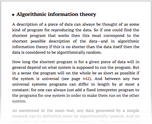
![History [of randomness definitions] History [of randomness definitions]](/nks/img/thumbnails/notes-10-3--history-of-randomness-definitions--textonly.png)
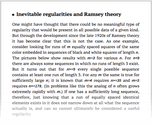
![History [of complexity definitions] History [of complexity definitions]](/nks/img/thumbnails/notes-10-4--history-of-complexity-definitions--textonly.png)
![Practicalities [of data compression] Practicalities [of data compression]](/nks/img/thumbnails/notes-10-5--practicalities-of-data-compression--textonly.png)
![History [of data compression] History [of data compression]](/nks/img/thumbnails/notes-10-5--history-of-data-compression--textonly.png)
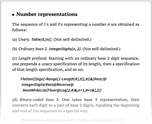
![Lengths of [number] representations Lengths of [number] representations](/nks/img/thumbnails/notes-10-5--lengths-of-number-representations--textonly.png)
![Completeness [of number representations] Completeness [of number representations]](/nks/img/thumbnails/notes-10-5--completeness-of-number-representations--textonly.png)
![[Number representations in] practical computing [Number representations in] practical computing](/nks/img/thumbnails/notes-10-5--number-representations-in-practical-computing--textonly.png)
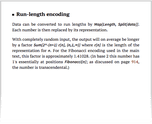
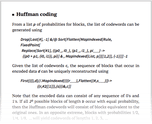
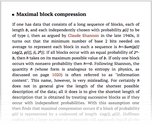
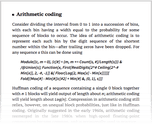
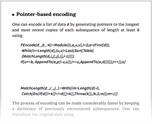
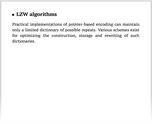
![Recursive subdivision [encoding] Recursive subdivision [encoding]](/nks/img/thumbnails/notes-10-5--recursive-subdivision-encoding--textonly.png)
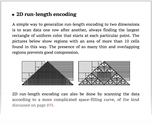
![History [of irreversible data compression] History [of irreversible data compression]](/nks/img/thumbnails/notes-10-6--history-of-irreversible-data-compression--textonly.png)
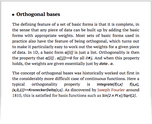
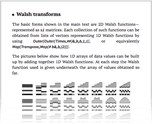
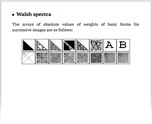
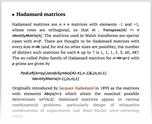
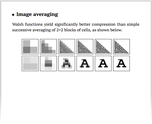
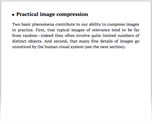
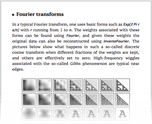
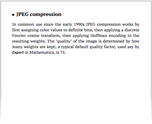
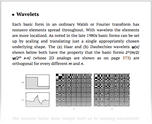
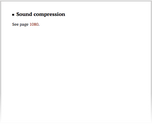
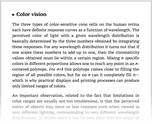
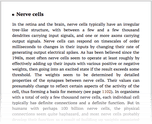
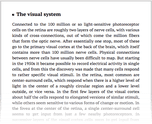
![Feedback [in visual processing] Feedback [in visual processing]](/nks/img/thumbnails/notes-10-7--feedback-in-visual-processing--textonly.png)
![Scale invariance [in vision] Scale invariance [in vision]](/nks/img/thumbnails/notes-10-7--scale-invariance-in-vision--textonly.png)
![History [of vision research] History [of vision research]](/nks/img/thumbnails/notes-10-7--history-of-vision-research--textonly.png)
![Implementation [of texture perception model] Implementation [of texture perception model]](/nks/img/thumbnails/notes-10-7--implementation-of-texture-perception-model--textonly.png)
![Testing the [texture perception] model Testing the [texture perception] model](/nks/img/thumbnails/notes-10-7--testing-the-texture-perception-model--textonly.png)
![Related [texture perception] models Related [texture perception] models](/nks/img/thumbnails/notes-10-7--related-texture-perception-models--textonly.png)
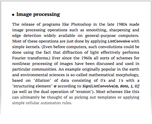
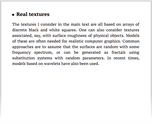
![Statistical methods [for texture analysis] Statistical methods [for texture analysis]](/nks/img/thumbnails/notes-10-7--statistical-methods-for-texture-analysis--textonly.png)
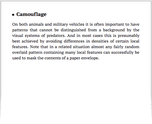
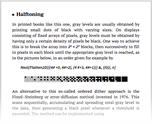
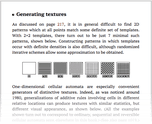
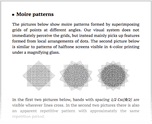
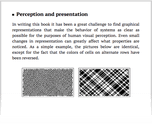
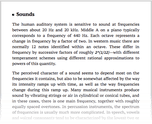
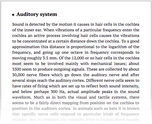
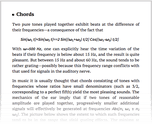
![History [of auditory perception] History [of auditory perception]](/nks/img/thumbnails/notes-10-8--history-of-auditory-perception--textonly.png)
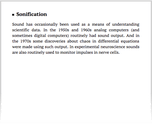
![Implementation [of sound] Implementation [of sound]](/nks/img/thumbnails/notes-10-8--implementation-of-sound--textonly.png)
![[Sounds based on] time variation [Sounds based on] time variation](/nks/img/thumbnails/notes-10-8--sounds-based-on-time-variation--textonly.png)
![[Sounds based on] musical scores [Sounds based on] musical scores](/nks/img/thumbnails/notes-10-8--sounds-based-on-musical-scores--textonly.png)
![Recognizing repetition [in sounds] Recognizing repetition [in sounds]](/nks/img/thumbnails/notes-10-8--recognizing-repetition-in-sounds--textonly.png)
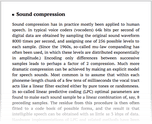
![Spectra [of sequences] Spectra [of sequences]](/nks/img/thumbnails/notes-10-8--spectra-of-sequences--textonly.png)
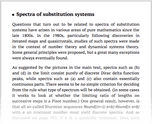
![[Sequences with] flat spectra [Sequences with] flat spectra](/nks/img/thumbnails/notes-10-8--sequences-with-flat-spectra--textonly.png)
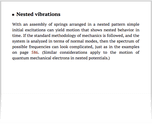
![[Spectra of] random block sequences [Spectra of] random block sequences](/nks/img/thumbnails/notes-10-8--spectra-of-random-block-sequences--textonly.png)
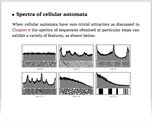
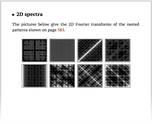
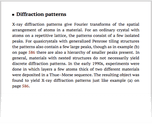
![History [of statistics] History [of statistics]](/nks/img/thumbnails/notes-10-9--history-of-statistics--textonly.png)
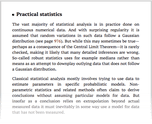
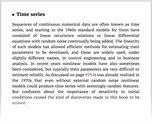
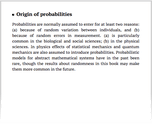
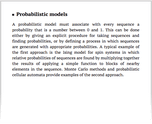
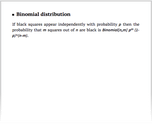
![Estimation of parameters [in probabilistic models] Estimation of parameters [in probabilistic models]](/nks/img/thumbnails/notes-10-9--estimation-of-parameters-in-probabilistic-models--textonly.png)
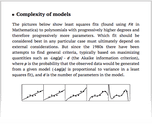
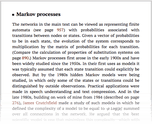
![[Models involving] non-local processes [Models involving] non-local processes](/nks/img/thumbnails/notes-10-9--models-involving-non-local-processes--textonly.png)
![Block frequencies [in sequences] Block frequencies [in sequences]](/nks/img/thumbnails/notes-10-9--block-frequencies-in-sequences--textonly.png)
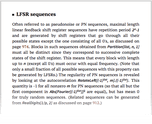
![Entropy estimates [for sequences] Entropy estimates [for sequences]](/nks/img/thumbnails/notes-10-9--entropy-estimates-for-sequences--textonly.png)
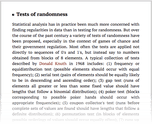

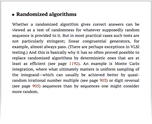
![History [of cryptography] History [of cryptography]](/nks/img/thumbnails/notes-10-10--history-of-cryptography--textonly.png)
![Basic theory [of cryptography] Basic theory [of cryptography]](/nks/img/thumbnails/notes-10-10--basic-theory-of-cryptography--textonly.png)
![[Redundancy in] text [Redundancy in] text](/nks/img/thumbnails/notes-10-10--redundancy-in-text--textonly.png)
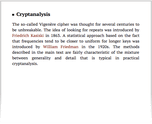
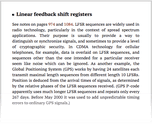
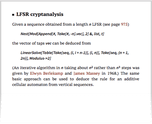
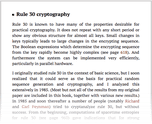
![[Cryptographic] properties of rule 30 [Cryptographic] properties of rule 30](/nks/img/thumbnails/notes-10-10--cryptographic-properties-of-rule-30--textonly.png)
![Directional sampling [in cellular automata] Directional sampling [in cellular automata]](/nks/img/thumbnails/notes-10-10--directional-sampling-in-cellular-automata--textonly.png)
![Alternative rules [for cryptography] Alternative rules [for cryptography]](/nks/img/thumbnails/notes-10-10--alternative-rules-for-cryptography--textonly.png)
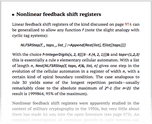
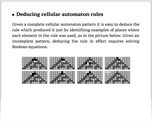
![[Cryptanalysis of] linear congruential generators [Cryptanalysis of] linear congruential generators](/nks/img/thumbnails/notes-10-10--cryptanalysis-of-linear-congruential-generators--textonly.png)
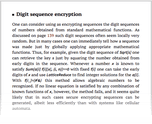
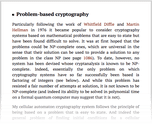
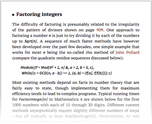
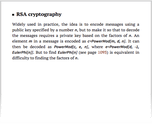
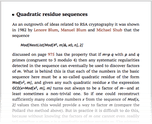
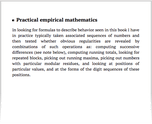
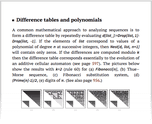
![Implementation [of repetitive array] Implementation [of repetitive array]](/nks/img/thumbnails/notes-10-11--implementation-of-repetitive-array--textonly.png)

![Implementation [of finite automata for nested patterns] Implementation [of finite automata for nested patterns]](/nks/img/thumbnails/notes-10-11--implementation-of-finite-automata-for-nested-patterns--textonly.png)
![[Patterns from] arbitrary digit operations [Patterns from] arbitrary digit operations](/nks/img/thumbnails/notes-10-11--patterns-from-arbitrary-digit-operations--textonly.png)
![Generating functions [for nested patterns] Generating functions [for nested patterns]](/nks/img/thumbnails/notes-10-11--generating-functions-for-nested-patterns--textonly.png)

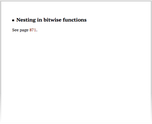
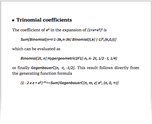
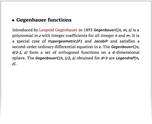
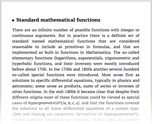
![[Generating functions for] 1D sequences [Generating functions for] 1D sequences](/nks/img/thumbnails/notes-10-11--generating-functions-for-1d-sequences--textonly.png)
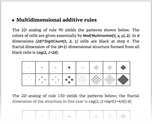
![Continuous generalizations [of additive rules] Continuous generalizations [of additive rules]](/nks/img/thumbnails/notes-10-11--continuous-generalizations-of-additive-rules--textonly.png)
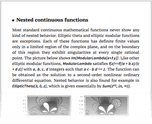
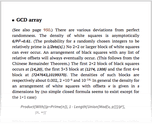
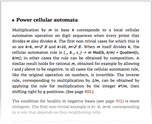
![Computing powers [of numbers] Computing powers [of numbers]](/nks/img/thumbnails/notes-10-11--computing-powers-of-numbers--textonly.png)
![Complex powers [of numbers] Complex powers [of numbers]](/nks/img/thumbnails/notes-10-11--complex-powers-of-numbers--textonly.png)
![[Algebraic computation of] additive cellular automata [Algebraic computation of] additive cellular automata](/nks/img/thumbnails/notes-10-11--algebraic-computation-of-additive-cellular-automata--textonly.png)
![The more general case [of computation speed ups] The more general case [of computation speed ups]](/nks/img/thumbnails/notes-10-11--the-more-general-case-of-computation-speed-ups--textonly.png)
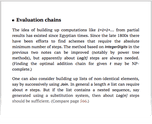
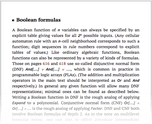
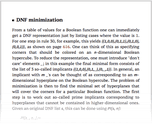
![[Boolean] formula sizes [Boolean] formula sizes](/nks/img/thumbnails/notes-10-11--boolean-formula-sizes--textonly.png)
![Cellular automaton [Boolean] formulas Cellular automaton [Boolean] formulas](/nks/img/thumbnails/notes-10-11--cellular-automaton-boolean-formulas--textonly.png)
![Primitive [Boolean] functions Primitive [Boolean] functions](/nks/img/thumbnails/notes-10-11--primitive-boolean-functions--textonly.png)
![Multilevel [Boolean] formulas Multilevel [Boolean] formulas](/nks/img/thumbnails/notes-10-11--multilevel-boolean-formulas--textonly.png)
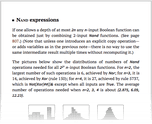
![Cellular automaton [Nand] formulas Cellular automaton [Nand] formulas](/nks/img/thumbnails/notes-10-11--cellular-automaton-nand-formulas--textonly.png)
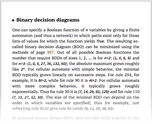
![History [of Boolean functions] History [of Boolean functions]](/nks/img/thumbnails/notes-10-11--history-of-boolean-functions--textonly.png)
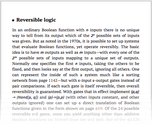
![[Reduced formulas in] continuous systems [Reduced formulas in] continuous systems](/nks/img/thumbnails/notes-10-11--reduced-formulas-in-continuous-systems--textonly.png)
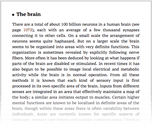
![History [of ideas about thinking] History [of ideas about thinking]](/nks/img/thumbnails/notes-10-12--history-of-ideas-about-thinking--textonly.png)
![The future [of machine thinking] The future [of machine thinking]](/nks/img/thumbnails/notes-10-12--the-future-of-machine-thinking--textonly.png)
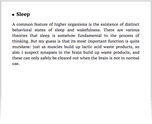
![Pointer encoding [and memory] Pointer encoding [and memory]](/nks/img/thumbnails/notes-10-12--pointer-encoding-and-memory--textonly.png)
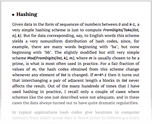
![[Identifying] similar words [Identifying] similar words](/nks/img/thumbnails/notes-10-12--identifying-similar-words--textonly.png)
![[Memory analogs with] numerical data [Memory analogs with] numerical data](/nks/img/thumbnails/notes-10-12--memory-analogs-with-numerical-data--textonly.png)
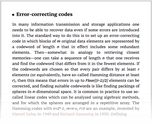
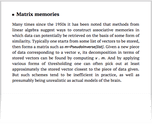
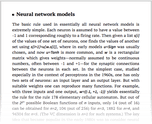
![[Human] memory [Human] memory](/nks/img/thumbnails/notes-10-12--human-memory--textonly.png)
![[Cognitive] child development [Cognitive] child development](/nks/img/thumbnails/notes-10-12--cognitive-child-development--textonly.png)
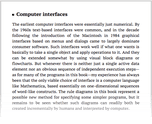
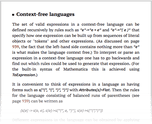
![[Computer and human] languages [Computer and human] languages](/nks/img/thumbnails/notes-10-12--computer-and-human-languages--textonly.png)
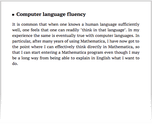
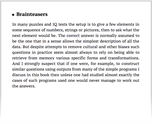
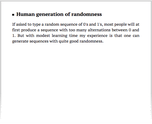
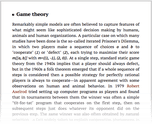
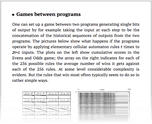
![Biological [forms of] perception Biological [forms of] perception](/nks/img/thumbnails/notes-10-13--biological-forms-of-perception--textonly.png)
![Evolving to predict [data] Evolving to predict [data]](/nks/img/thumbnails/notes-10-13--evolving-to-predict-data--textonly.png)
![Familiar features [of perceived data] Familiar features [of perceived data]](/nks/img/thumbnails/notes-10-13--familiar-features-of-perceived-data--textonly.png)
